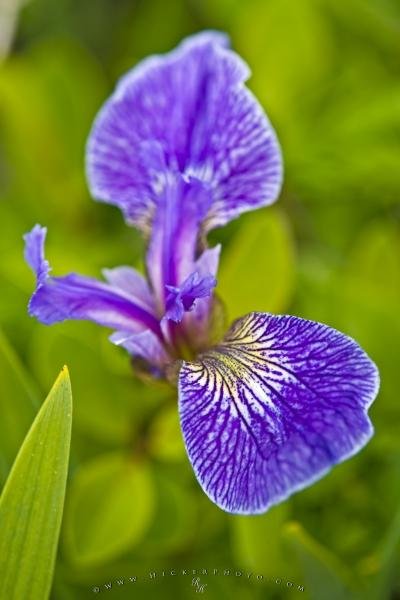Photo: Beachhead Iris Flower Picture
This picture taken at the Burnt Cape Ecological Reserve in Newfoundland, Canada displays the unique designs that adorn the flower petals on the Beachhead Iris.
The Burnt Cape Ecological Reserve in Newfoundland Labrador in Canada is a great location to visit where you can view and capture a picture or two of the Beachhead Iris while in full bloom. The flower displays petals that have intriguing lines or veins adorning them and the center of the flower has both female and male organs.
For growing purposes, the Beachhead Iris prefers light and loves to flourish in wet meadows, along the sides of rivers or out in the open forests. A flower that blooms around the month of June prominently displays three large bluish purple colored petals. The seeds are perfectly ripened in August and are then pollinated by the insects.
The leaves that surround the Beachhead Iris are a bright shade of green and are fairly tall and slim with pointed tips. The stem protrudes from the center of a group of leaves growing straight up with the flower opening atop at around twenty-four inches in height. ... continue below the picture...
Beachhead Iris Flower Picture

at the Burnt Cape Ecological Reserve, Newfoundland.
Pictures from photo gallery "Pictures Of Le Chateau Frontenac Quebec City"
This picture is part of the photo album "Newfoundland Pictures" - there are more beautiful images waiting for you.
Related stock photo galleries, pictures & travel ideas:
Beachhead Iris Flower Picture
... When in full bloom, the entire plant can spread over an area of about eighteen inches.
While visiting the Great Northern Peninsula in Newfoundland, be sure to tour around the Burnt Cape Ecological Reserve and explore one of the most important botanical sites in Newfoundland. Over three hundred types of plant species thrive here and you will soon find that the Beachhead Iris is not the only type of flower that you are taking a picture of.
Beachhead Iris, Iris setosa, at the Burnt Cape Ecological Reserve, Burnt Island, along Highway 437, Northern Peninsula, Great Northern Peninsula, Viking Trail, Trails to the Vikings, Newfoundland, Newfoundland Labrador, Canada.
Technical Information:
I photographed this photo with the digital SLR camera model Canon EOS-1Ds Mark II, aperture of f/5.0, exposure time of 1/250 sec. on ISO 100, as always I used a original Canon Lens, the focus lenght for this picture was 180mm.
This picture taken at the Burnt Cape Ecological Reserve in Newfoundland, Canada displays the unique designs that adorn the flower petals on the Beachhead Iris.
